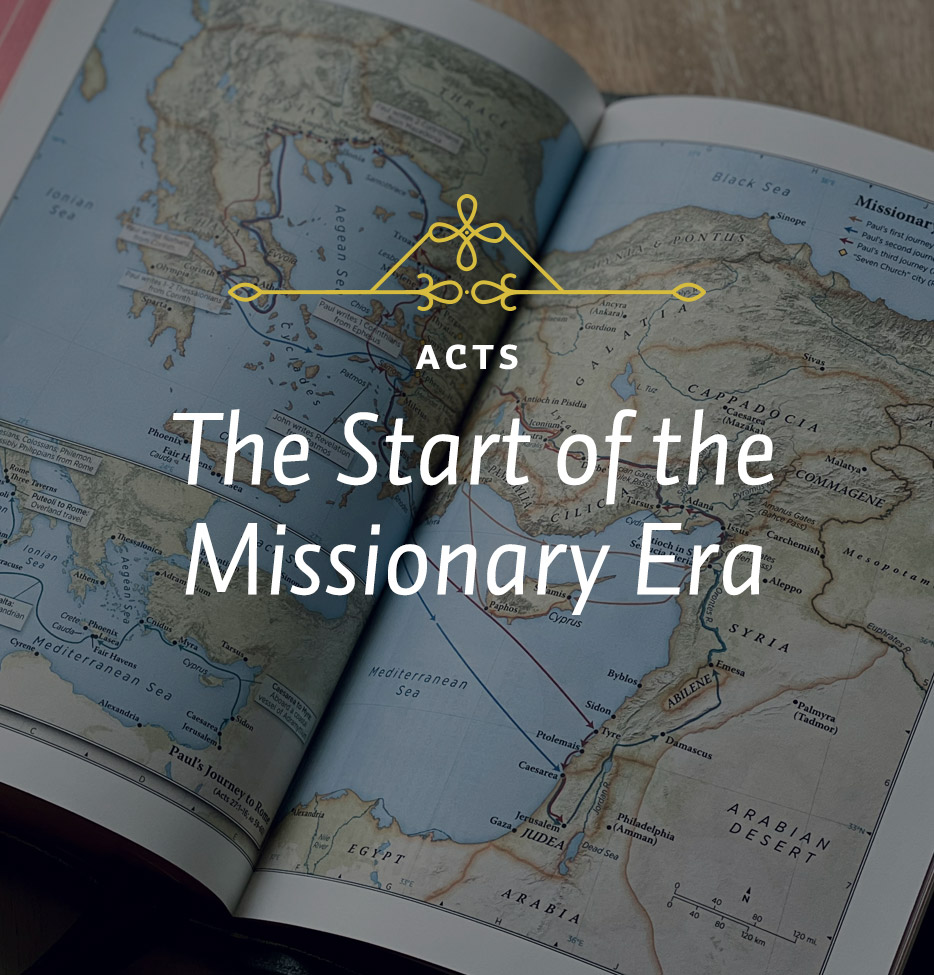No matter how a person chooses to outline Acts, it is evident that chapter 13 begins a new section. It describes a third stage in the expansion of the Gospel. I have outlined Acts by the pattern Jesus set in Acts’ version of the Great Commission. Jesus told the disciples to remain in Jerusalem until they should receive power from the Holy Spirit, but that after the Holy Spirit had come upon them, they were to be His witnesses “in Jerusalem, and in all Judea and Samaria, and to the ends of the earth” (Acts 1:8). I think Acts is based on that outline. Chapters 1-7 concern the preaching of the Gospel in Jerusalem, where foundations were laid for a theologically healthy church. Chapters 8-12 tell of the work in Judea and Samaria, the area just beyond Jerusalem. Finally, beginning with chapter 13, we have the expansion of the Gospel to the entire Roman world. Chapter 13 therefore marks the beginning of what is rightly called “the missionary era.”
As we study this chapter, we need to see a number of important things. First, we need to see the church base from which this missionary outreach was conducted. Second, we need to think of the work of the Holy Spirit in calling, equipping, sending and blessing the missionaries. Third, we need to see the nature of the task, as it is illustrated in the work that took place on Cyprus, the first missionary target of the church in the Roman Empire.
I begin with the church at Antioch, because the church was the tool God used in this expansion. God is sovereign over all things and does what He will do. Nobody frustrates Him. But God does what He does through tools, and in the case of missionary work the tool God uses is His church. At Antioch we have an example of a great missionary tool, a church that was established, well-taught, integrated, active and seeking God’s direction.
1. It was an established church. It was not a fly-by-night church, as some seem to be. If we go back to the eleventh chapter, we will find how the church started. Christians were scattered by the persecution in connection with the death of Stephen to Phoenicia, Cyprus and Antioch, and some of them—men from Cyprus and Cyrene—came to Antioch where they began to share the Gospel with Greeks as well as Jews (vv. 19-20). Later the pillar saints in Jerusalem wondered if anything sound could take place in a purely Gentile community and sent people from Jerusalem to Antioch to investigate. When they came back the delegation reported that everything was right there. The church was doing well.
A church that is floundering is inadequate even for its own needs, and it certainly is not alert to the needs of others. A church that does not know where it is coming from, why it is here, or where it is going, is not likely to be of use in the missionary enterprise. Yet here was a church which in a very short time had become very sound indeed.
2. It was a church that had been well-taught. Notice how chapter 13 begins: “In the church of Antioch there were prophets and teachers.” The words are plural in each case—more than one prophet and more than one teacher. Then there is a colon, and the text lists: “Barnabas, Simeon called Niger, Lucius of Cyrene, Manaen (who had been brought up with Herod the Tetrarch) and Saul.” There are five names in this list, and we do not even know that it is exhaustive.
Where did this great body of teachers come from? Well, when we were in Acts 11 we saw that Barnabas, when he came to Antioch, recognized the church’s need for sound teaching. He searched in his mind for somebody who could help in this task, thought of Saul and then went all the way to Turkey to fetch him from Tarsus. Perhaps Barnabas had recruited the other teachers also. We do not know. But whatever the case, Barnabas’ sense of this need certainly established teaching as a priority in the thinking of this church.






